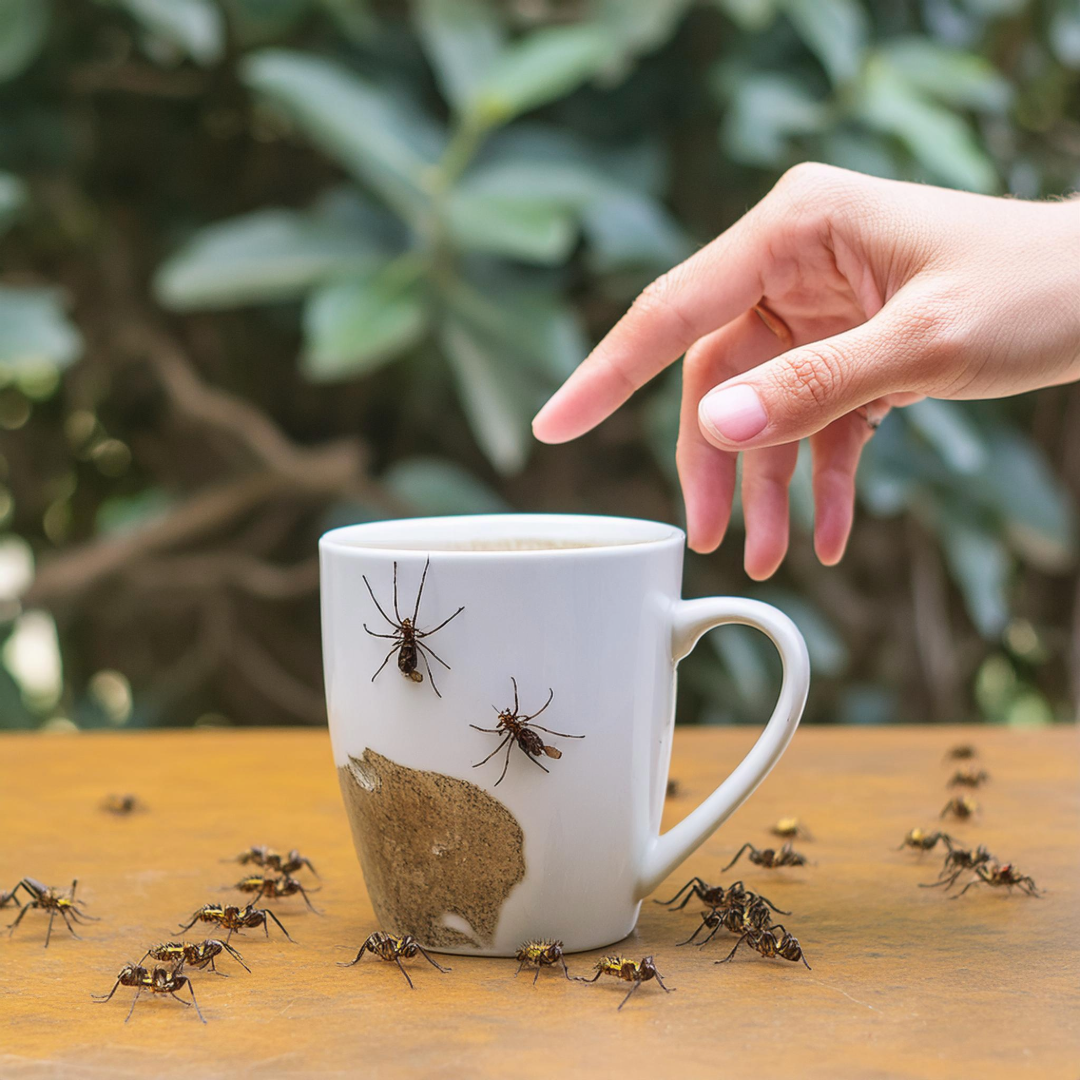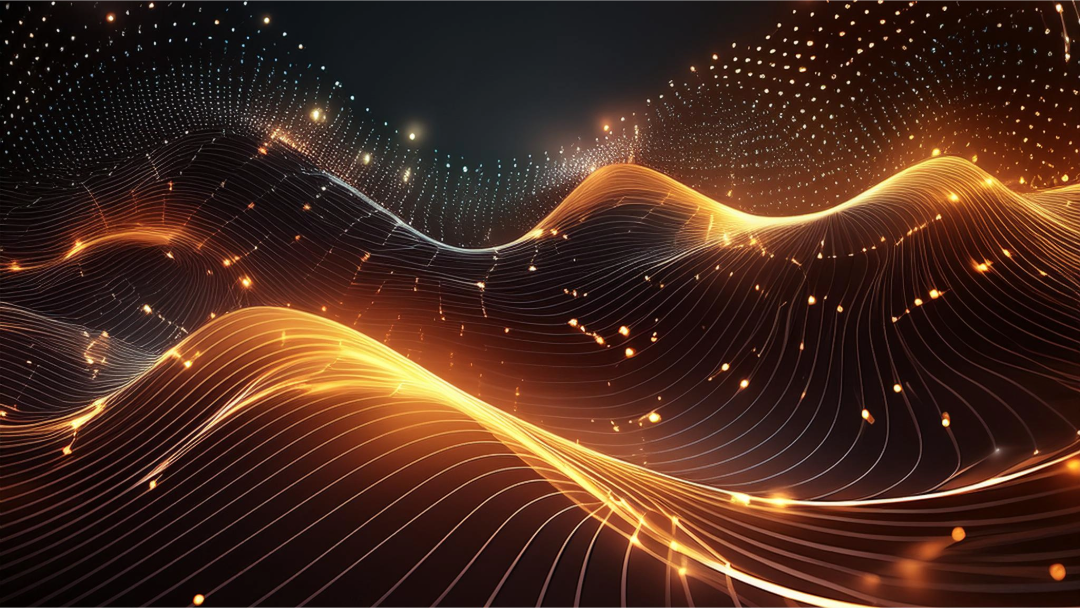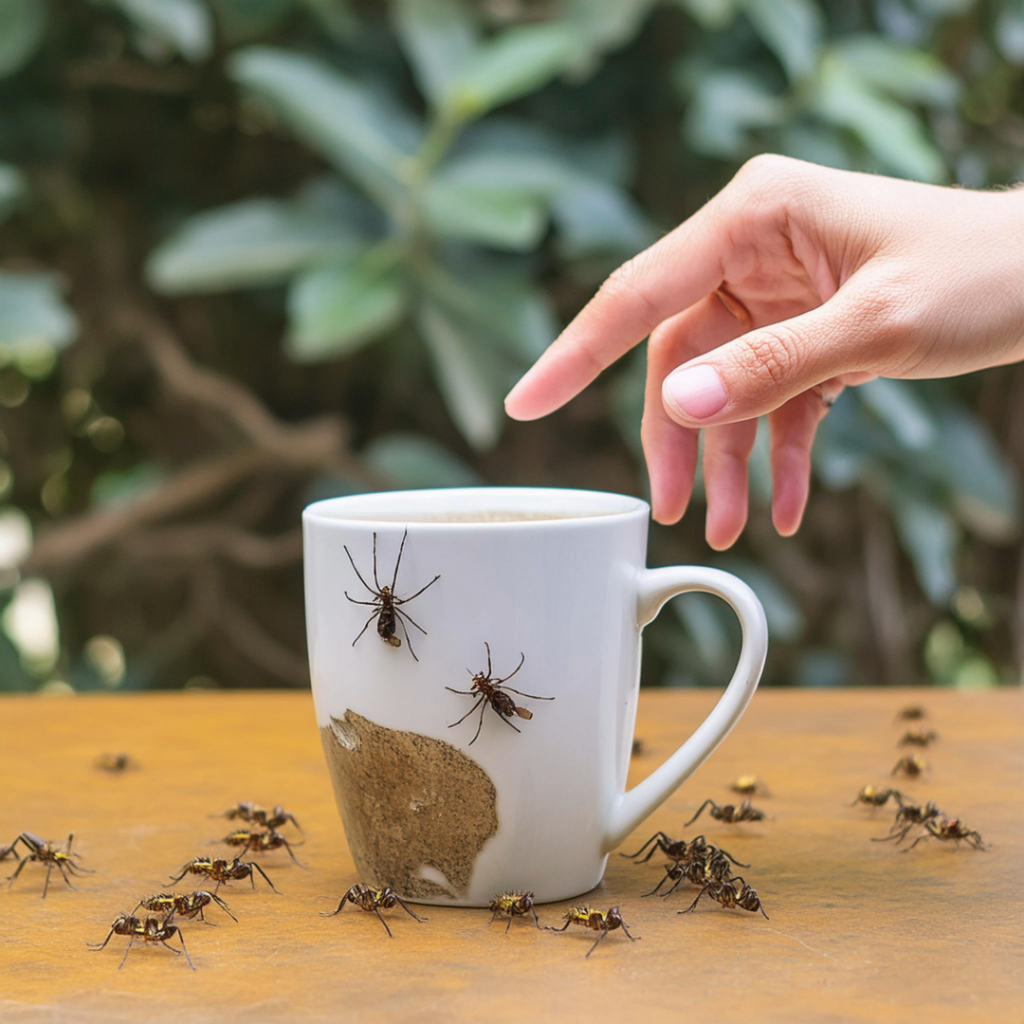- Deafblindness
- Syn
- Hearing
- Mobility
- Communication
- ICT
- Research projects
- Publications
- Conferences and webinars
- Video archive
Charles Bonnet Syndrome

What is Charles Bonnet Syndrome?
Charles Bonnet Syndrome (CBS) is described as experiencing recurrent or persistent simple or complex visual hallucinations without altered consciousness, cognitive or psychiatric disorders, sleep disturbances, but with damage to the eyes or the visual system in general (Niazi et al 2020).
Hallucinations are divided into simple and complex hallucinations. The incidence of these varies in different studies, from 15 to 60% (O'Brien et al 2020).
Simple hallucinations in Charles Bonnet Syndrome

Simple hallucinations can be seeing light in different shapes, simple patterns or the surroundings being coloured, for example yellow or green.
- dis alive all the time. Like now, when I'm sitting here today with you, it happens as small, very small dots that just pass by and then there may be larger figures in the picture, then it also passes by, it only lasts 2-3 seconds, then the whole picture changes. And it becomes very... tiring, and it takes a lot of concentration from me, as I said earlier. So the fact that I forget when I'm inside, and if I have different tasks, and have to go from one to the other and become... unable to coordinate between them. And then suddenly I'm jumping on both tables and walls and, ...so, almost every day, actually, I hurt myself in one way or another due to the fact that I lose concentration (Quote from participant in master's project, Hovland, 2019).
Complex hallucinations in Charles Bonnet Syndrome

Complex hallucinations can involve seeing everything that exists, that can be seen; people, animals, cars or buildings. You can see entire scenarios like in a film, but the hallucinations are without sound.
– In the evening when I go to bed, sometimes I see that there are actually people who can
suddenly turn up at the bedside, and stand and look at me by the bed when I've gone to bed. And, yes, someone, there can be, yes, it can be both men and women, but preferably women. Many times it's nice ladies, and sometimes it's the case that I might see someone with sinister intentions, so many times I can actually get a little scared. And then I think to myself, oh my God, I'm blind, it must be hallucinations. So there. But there have actually been times when I've had to get out of bed, so I've had to feel if there really was something standing by the bed. It was so natural, very natural. (Quote from participant in master's project, Hovland, 2019).
Cause of Charles Bonnet syndrome
We don't know for sure the cause of Charles Bonnet Syndrome. A widely used theory, Sensory Deprivation Theory, describes that when the brain cannot access visual impressions due to damage to the eyes, optic nerve or visual centre in the brain, this leads to activity in the brain that can be experienced as visual hallucinations (Pang, 2016).
Another explanatory model, Feedback - Feedforward, is that abnormal activity in the brain is usually suppressed by input through the sense of sight. The activity that appears as hallucinations occurs when input is reduced due to visual damage (Carpenter et al, 2019).
Risk factors and treatment
Factors that increase the risk of experiencing hallucinations as a result of Charles Bonnet syndrome are:
- Isolation (Jones et al, 2021)
- Hearing impairment
- Stress
- Fatigue
- Reduced lighting
- Strong lighting
(Menon et al., 2003)
There is no clear-cut treatment for CBS. However, it is assumed that reducing the impact of the risk factors mentioned above has a positive effect, not least because it is important to get good information.
Based on current knowledge, optimising vision, improving lighting conditions and avoiding social isolation are recommended. For some, drug treatment should be tested, but simple strategies may be sufficient (Carpenter et al. 2019, O'Brien, 2020). The affected person can use techniques such as changing lighting conditions, direction of gaze, moving to another room, or going against the hallucination (Carpenter et al. 2019).
Important to share experiences and break taboos
Little is known about Charles Bonnet Syndrome, both among professionals and among people with CBS (Gordon & Felfeli, 2018). 36% responded in a survey that they experience their hallucinations as very unpleasant. Telling others about their hallucinations seems to be taboo, perhaps out of fear of what others will think (Geueke et al, 2012).
In a project at Eikholt, it emerged that the participants felt it was important to have the opportunity to share their experiences with others and gain knowledge about what CBS is. It was perceived as good to know that others also have these hallucinations (Hovland, 2019).
– "Yes, I think it makes a big difference, because you go there and think that this is something that happens to you and no one else. A lot of people have it, and that makes it easier to accept and easier to maybe, maybe relax about it... compared to flying around thinking you're a weirdo (Quote from participant in master's project, Hovland, 2019)
Read Line Kristine Hovland's master's thesis
"Living with Charles Bonnet syndrome when you have visual and hearing impairment/deafblindness - a phenomenological perspective":
https://www.eikholt.no/app/uploads/2025/01/Masteroppgave-Line-Kristine-HOvland.pdf
Watch footage about CBS
Watch a recording from Eikholt's webinar January 2023 with theme HAssistive technology, organisation and services for people with visual and hearing impairment/deafblindness Eikholt
Here you can see and hear Lie K. Hovland's presentation of Charles Bonnet syndrome. The video is subtitled and in Norwegian sign language.
Exciting research in progress
There are currently several interesting international research projects about CBS that are expected to be completed during 2025-2026. The studies have different focuses. These include mapping the effect of recommended coping strategies, the effect of light therapy and studies of brain activity prior to, during and after episodes of hallucinations.
Sources
Niazi S., Nielsen M.K., Sigh A., Sørensen T.L. and Subhi Y. (2020): Prevalence of Charles Bonnet syndrome in patients with age-related macular degeneration: systematic review and meta-analysis. Acta Ophtalmol 98: 121-131.
O'Brien J., Taylor J P., Ballard C., Barker R A., Bradley C., Burns A., Collerton D., Dave S., Dudley R., Francis P., Gibbon A., Harris K., Lawrence V., Leroi I., McKeith I., Michaleides M., Naik C., O'Callaghan C., Olsen K., Onofrl M., Pinto R., Russel G., Swann P., Thomas A., Urwyler P., Weil R S. and ffytche D. (2020): Visual hallucinations in neurological and ophthalmological disease: pathophysiology and management. Journal Neurol Neurosurg Psychiatry 91: 512-519.
Pang L. (2016): Hallucinations experienced by visually impaired: Charles Bonnet Syndrome. Optometry and vision science, 93, no12.
Carpenter K., Jolly J K. and Bridge H. (2019): The elephant in the room; understanding the pathogenesis of Charles Bonnet syndrome. Ophthalmic & Physiological Optics 39: 414-421.
Geueke, A., Morley, M. G., Morley, K., Lorch, A., Jackson, M., Lambrou, A., ... Oteng-Amoako, A. (2012). Anxiety and Charles Bonnet Syndrome. Journal of Visual impairment & Blindness, 106, 145-153.
Hovland L.K. (2019). CBS Charles Bonnet Syndrome (NR 01/19). Eikholt. ISBN 978-82-93653-07-3 (PDF).
Jones L., Ditzel-Finn L, Potts J. & Moosajee M. (2021) Exacerbation of visual hallucinations in Charles Bonnet syndrome due to the social implications of COVID-19. BMJ Open Ophthalmology 2021(6), e000670.
Menon, G. J., Rahman, I., Menon, S. J. & Dutton, G. N. (2003). Complex Visual Hallucinations in the Visually Impaired: The Charles Bonnet Syndrome. Survey of Ophthalmology, 48, 58-72.
Vukicevic, M. & Fitzmaurice, K. (2008). Butterflies and black lacy patterns: the prevalence and characteristics of Charles Bonnet hallucinations in an Australian population. Clinical & Experimental Ophthalmology, 36, 659-665. https://doi.org/10.1111/j.1442-9071.2008.01814.x
Carpenter, K., Jolly, J.K, & Bridge, H., (2019). The elephant in the room: understanding the pathogenesis of Charles Bonnet syndrome. The Authors Ophthalmic & Physiological Optics, 2019, 414-421. https://doi.org/10.1111/opo.12645
O'Brien, J.,Taylor, J.P.,Ballard, C.,Barker, R.A.,Bradley, C.,Burns, A.,Collerton, D.,Dave, S.,Dudley, R.,Francis, P.,Gibbons, A.,Harris, K.,Lawrence, V.,Leroi, I., McKeith, I., Michaelides, M., Naik, C., O'Callaghan, C.,Olsen, K.,.......Ffytche, D., (2020) Visual hallucinations in neurological and ophthalmological disease: pathophysiology and management. Journal of Neurology, Neurosurgery & Psychiatry, 91:512-519. http://dx.doi.org/10.1136/jnnp-2019-322702
Do you have any questions?
Get in touch with us! Contact information can be found here: Contact us - Eikholt
Do you want courses?
You can find the form here: Enquiry individual course
Also check out our group courses, you can find them here: Course - Eikholt
The article is written 28.06.2024
